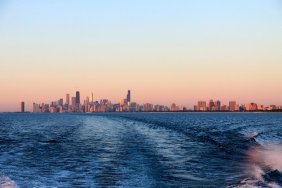 If there’s a good amount of snow layering the ground in your neck of the woods, and you’re looking for a new way to enjoy it, then cross-country skiing might be just what you’ve been waiting for. Cross-country skiing is a great way to get exercise and enjoy the outdoors this time of year, but unfortunately it’s something that many people never try out. Today, we’ll take a look at some of the basics of cross-country skiing by examining some tips to help you prepare for your first time out.
If there’s a good amount of snow layering the ground in your neck of the woods, and you’re looking for a new way to enjoy it, then cross-country skiing might be just what you’ve been waiting for. Cross-country skiing is a great way to get exercise and enjoy the outdoors this time of year, but unfortunately it’s something that many people never try out. Today, we’ll take a look at some of the basics of cross-country skiing by examining some tips to help you prepare for your first time out.
Obviously, with it being winter, you’ll want to dress in layers. Cross-country skiing is a physically demanding activity, which means your body can heat up quickly if you’re dressed too warmly. I’d wear moisture-wicking, non-cotton underwear, a lightweight fleece top and fleece tights next, and then a weatherproof outer shell. Something to cover your ears, head, and face is smart, as well, if it’s very cold or windy.
A pack is a nice piece of gear to have with you during all outdoor activities, not just skiing. With cross-country skiing, though, you’ll need a larger pack than you would during summer, because you’ll need extra clothing and gear to stay comfortable and safe. Such items include spare winter clothes (socks, gloves, baselayers, etc.), as well as a small snow shovel for emergencies.
When it comes to your skis, be sure to keep them tuned. The bases of your skis need attention to keep them in top shape, and metal-edge skis require routine maintenance. You can find the tools for tuning your skis anywhere skis are sold, but if you’re not familiar with it, such places also staff experts that can help, or even have repair shops on-site. We’ll touch on this more in Part Two, but being able to carry your skis comfortably makes a big difference. Prep for this by picking up one or two Velcro straps for holding your skis together while you’re carrying them from your car to the trail.
Before you head out, make sure top off your car’s washer fluid. Driving in winter means dealing with dirty slush on your windshield, which wipers alone can’t get rid of. Washer fluid will help keep you driving safely.
Finally, before setting out to ski the backcountry, it’s smart to take a class on backcountry safety or avalanche awareness, if that’s a risk in your area. Even if you’re skiing on flat terrain, there are still risk and potential dangers, and many outdoor retailers or ski shops offer free classes where you’ll gain vital information on how to stay safe.
Cross-country skiing is a fun way to enjoy the outdoors when the snow falls, but a little preparation and education beforehand will go a long way towards keeping you safe this winter. Keep the tips outlined above in mind if you’re thinking of trying out cross-country skiing this winter, and be sure to come back for more helpful tips!








